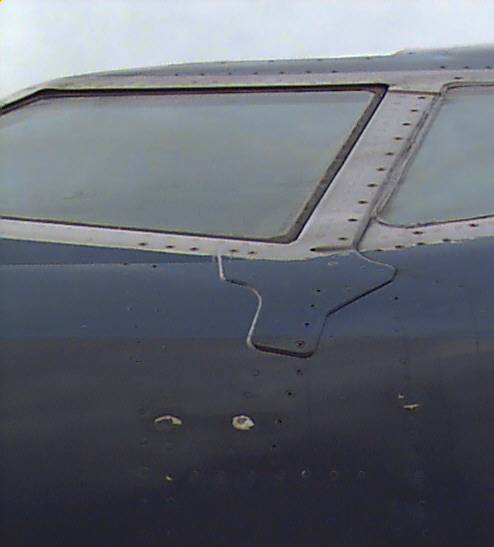 Lightning Strike
Lightning Strike
Home > Tech Photos > Walkaround > Lightning
Contents
This photograph shows damage caused by a lightning strike. These are three of the 5 entry holes, about 1 - 2 cms in diameter, there will also be some exit holes elsewhere on the airframe.
Although you are quite safe inside the aircraft when lightning strikes as the electricity is conducted away by the aircraft skin, it is necessary to check the compasses and radios immediately and then have the aircraft checked on the ground by an engineer.
Lightning is always located in the vicinity of CB's but is particularly likely when St Elmo's fire is observed which is defined as "Visible evidence of electrical discharge at a tolerably slow rate, this is not a problem, does not cause any form of damage, and in fact serves in a positive sense as a warning that the environment is electrified, and lightning may possibly occur.".
If you do see St Elmo's fire then you should take the usual precautions for both lightening and turbulence ie Cockpit lighting up, Start switches to FLT and fly at Turbulence speed (M074/M0.76).
All of the information, photographs & schematics from this website and much more is now available in a 374 page printed book or in electronic format.
*** Updated 05 Aug 2023 ***


